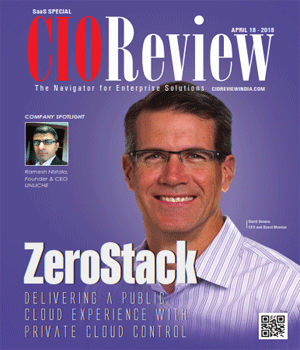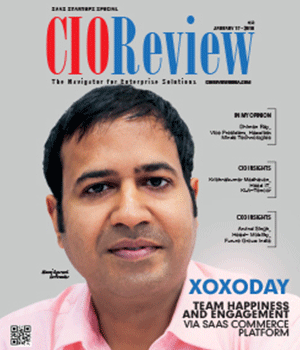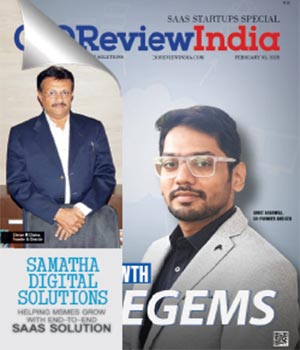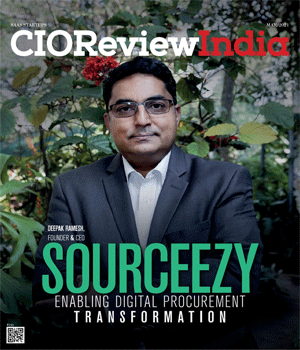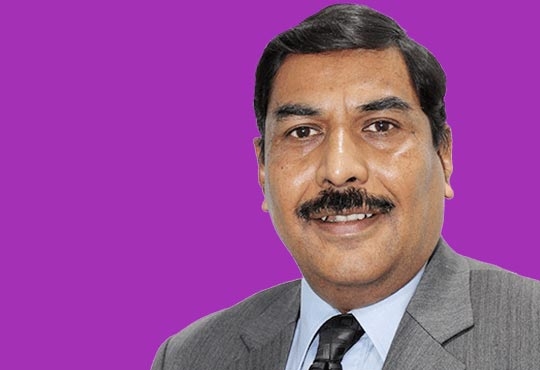
How India's Enterprise SaaS Companies can Overcome Demand Slowdown
Darshan.K, Correspondent, CIOTech Outlook Team | Sunday, 31 December 2023, 23:27 IST
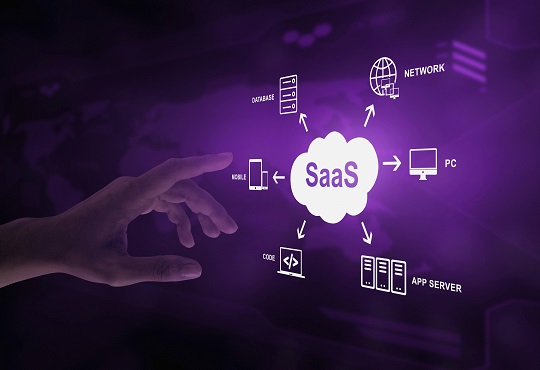
The S-curve is a phenomenon that summarizes any popular product life cycle. Every popular product has an explosive growth phase, a slow growth phase, and a plateau phase where growth is barely noticeable. Facebook is an excellent example of this. In 2004, it witnessed unparalleled user base growth, but as the market got saturated, the growth slowed down, and now its increase is barely noticeable compared to its prime years. This phenomenon is what is plaguing the Indian SaaS ecosystem; the market is overloaded, and the growth graph is seeing a gradual decline. To stay relevant in the SaaS markets, many companies have developed innovative strategies to get out of this slump phase, and here are a few tried and tested techniques that have assisted them in getting their growth back on track.
Diversification
A common saying, “Don’t put all your eggs in one basket,” applies to businesses too; this common yet mostly overlooked tactic that most companies fail to implement results in their downward spiral. Diversification of their existing product/service category instead of sticking to their existing solutions is a great way to tap into new avenues for growth.
It is also a great way to prevent over-reliance on a specific industry or client base. By tapping into new verticals, one can ensure a steady supply of income and have numerous branches when one solution isn't yielding profits.
"Diversification and globalization are the keys to the future," Fujio Mitarai, CEO of Canon.
ZOHO Corporation started as a provider of office productivity tools. Still, it diversified its offerings to include a suite of business applications, including CRM, HR, finance, and collaboration tools, catering to a broader range of enterprise needs.
Customer Retention
When a poor economic climate is encountered, one’s existing customers become vital. SaaS companies should actively engage with their current user base and understand their evolving needs and challenges. Existing customers should be catered to in such a way that not only should they ensure a steady stream of income, but they should also be catered to to make them long-term partners.
Upselling opportunities should be explored by introducing add-ons, premium services or other value propositions. In times of declining demand, new users should not be the main focus; existing customers should be strongly emphasized.
"Artificial Intelligence, Machine Learning along with other algorithmically targeting and immersive technologies are developing with time and are offering intelligent features which are required to personalize e-commerce and other experiences for customers," Prasanth Yerrapragada, VP - Technology, Telebu.
Salesforce, a pioneer in cloud-based CRM, strongly emphasizes customer success. Through regular customer engagement, robust support, and continuous product enhancements, Salesforce retains its customer base and upsells additional services, ensuring long-term partnerships.
Strategic Pricing
When faced with declining demand for your product, a call to one’s pricing strategy must be addressed. Having a single price on the product/service sounds appealing, but in doing so, only one type of customer is attracted. This pricing is only applicable to a finished, physically packed commodity. Still, for something that requires continuous live servicing and has an arsenal of features, it is wise to create a tiered pricing model to attract customers of different needs and purchasing powers.
This way, SaaS companies can ensure their solutions are more attractive and accessible, potentially offsetting the impact of reduced demand.
"Clients always expect premium quality products at a budget that they have fixed. It is always our job to keep up to those expectations and keep them coming back from time to time," Mohammed Zoheb Hossain, MD & CEO of Bismillah Enterprise
HubSpot, a provider of inbound marketing and sales software, offers tiered pricing plans to accommodate businesses of various sizes. Their flexible pricing model includes options for monthly or annual subscriptions, providing scalability and cost-effectiveness for clients.
Investing in Customer Education
In times of uncertainty, customers may hesitate to buy new products/services, and investors may hesitate to invest in new businesses. An unlikely but effective way companies target this reluctance is by investing in educating their audience. Comprehensive documentation, training programs, and responsive customer support can instill confidence in potential customers and help them make informed decisions.
Moreover, investing in customer success teams can significantly impact retention rates. Proactive engagement, regular check-ins, and prompt responses to customer concerns can enhance the overall customer experience and contribute to long-term loyalty.
"With the rising threats, adequate awareness among all stakeholders is vital, and must be followed by a detailed sop/ action plan on how to handle the same," Sumana Iyengar, CEO & Cofounder, Goavega Software India Pvt Ltd
Atlassian, known for its collaboration and productivity tools like Jira and Confluence, invests in extensive documentation, tutorials, and a strong community. Their commitment to customer education and support enhances user experience and encourages long-term product adoption.
Demand slowdowns are inevitable, but strategic planning and proactive measures can help companies weather the storm. By diversifying offerings, prioritizing customer retention and upselling, adjusting pricing models, investing in customer education and support, and exploring global expansion and partnerships, India's Enterprise SaaS companies can overcome the challenges posed by economic downturns and emerge more substantial and more resilient in the long run.
CIO Viewpoint
2020 To Be A Trendsetting Year For The SaaS...
By Abhilash Garg, VP IT (SaaS), DMI Financial Private Limited
Baseline It Transformation In Digital Era
By Shibin Chulliparambil, Head of IT, Mafatlal Industries Limited
Scenarios And Challenges In Personal Data...
By Ajay Kumar, Group Head IT, Polyplex
CXO Insights
The Rise Of Developer-LED Innovation And...
By Subrato Bandhu, Regional Vice President, OutSystems
Four Questions To Answer Before Considering A...
By Shrikant Navelkar, Director, Clover Infotech
3 Focus Areas For An Autonomous Driving Revolution




